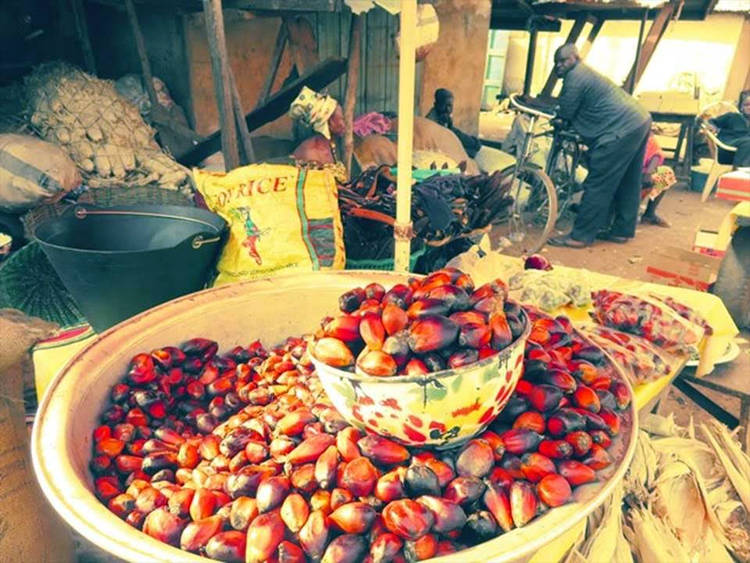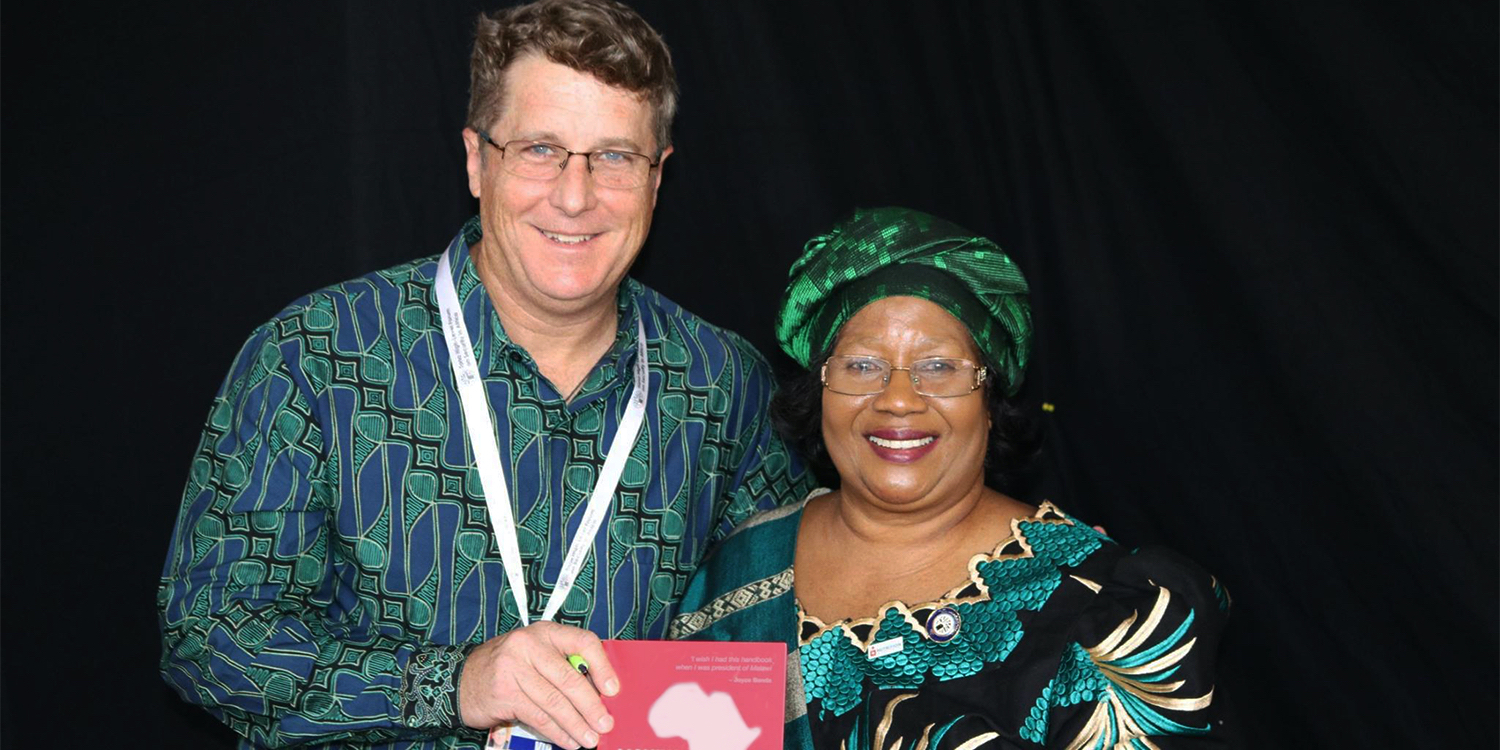News
Ghana: Realising Africa's Agriculture Potential
The solution to Ghana's agriculture challenges lies not in fixing but in changing the system.

Director, The Brenthurst Foundation

CEO, Demeter Holdings

Machel-Mandela Fellow, The Brenthurst Foundation

Ghana’s failure to develop a thriving agricultural sector reflects a trend across the continent. What can African countries do differently to harness their agricultural potential? By GREG MILLS, ROCCO FALCONER and SAUL MUSKER.
“Amaraaba!” smiled the military officer in combat fatigues, standing at a road block chicane as we left the small airport in Tamale.
Her friendly Dagbani greeting contrasted with the signs dotted round the Airborne Training School at the adjacent Barwah Barracks: “Death from Above” and, our favourite, “Meet with the Best, Die with the Rest”. The pilots’ view from the air is less of the enemy, however, than of expansive shea trees, whose soaps and beauty products are a key source of local enterprise and income.
Yet despite its abundant land and labour, its plentiful water and rich soils, today Ghana imports more than half of its food requirements. The foodstuffs of Tamale’s Jabu Market have higher prices than in the United Kingdom.
Ghana imports almost all of its flour from the United States and Canada, more than a third of its palm oil from Malaysia, most of its tomatoes from neighbouring Burkina Faso, and an increasing quantity of its rice from India and East Asia. More than half of Ghana’s arable land remains uncultivated. Even the production of its greatest export, cocoa, is falling annually.
Agriculture is often cited as Africa’s greatest industrial and developmental opportunity. Ghana’s shortcomings in this sector are indicative of other countries on the continent – and its solutions could be applied elsewhere.
The capital of the northern region, known as the “breadbasket” of Ghana, Tamale is both the country’s geographic centre and the heart of its production of staples – millet, maize, ground nuts, and rice.
Still, its output is not nearly enough to meet the country’s needs. An Indian firm, Avnash, recently constructed a rice mill in the city capable of processing 450 tonnes a day, which would, at full production, reduce the estimated $500-million a year import bill. But so far production is reportedly less than ten percent of its potential, as there is not enough local rice to sustain the operation.
The route to better yields is well known, centring around improved inputs (including seed and fertilisers) together with better irrigation. This much is acknowledged in President Nana Akufo-Addo’s “one village, one dam” proposal, which takes aim at the reality that less than one percent of farmland is irrigated.
A visit to Golinga Dam outside Tamale tells its own story. A dam was built in the 1970s by one of Ghana’s then-serial military regimes. It has transformed the life of the community, in allowing for two farming seasons. “Irrigation”, they say, “improves yields by one hundred percent.”
Overproduction, a failure to restore the soil’s alkaline content, rampant burning, a lack of insecticides and mechanisation, a lack of variety in fertiliser use and the failure of an extension system to provide these inputs all contribute to low yields. Even so, the reasons are not just technical but political.
Golinga’s 154 farmers and the 5,000 people who depend on the dam have not, they say, “seen someone from government in three years”. “When they did come,” they complain, “they gave just 20 of us a handful of rice seed.” They have, instead, “poor roads, no transport and no storage facilities”.
The same story of a distant government controlling, but not delivering, is replicated across the sector, whether in shea butter or cocoa.
Agriculture sectors work best when there is an agro-industry, where producers feed processors and storage facilities. Every processor in Ghana has the same problem: they can’t get an adequate supply of feedstock for their factories. As a result, market volumes are insufficient. Processors invest capital but can’t get the supply and soon go bust, while producers can't get to market. With everyone producing at the same time, absent sufficient off-takers and storage, at harvest time the price collapses. Farmers will sell their crops at any cost or risk losing it.1
This cycle is worsened when producers cannot access cheap finance. Ghana’s interest rates are over 25%, reflecting high inflation and the government’s soaring deficit. The deficit, in turn, relates to unsustainable levels of public debt driven by inefficient electricity parastatals. Irresponsible spending and borrowing by government has made finance inaccessible to farmers, making it hard for them to expand or improve their farms.
In cocoa, perhaps Ghana’s best-known commodity, the problem is still more complex and wrapped up in vested interests.
A manufacturing business called 57 Chocolate, so named to “capture the independence spirit”, is a self-capitalised artisanal business started by two American sisters of Ghanaian parentage. One of the sisters, Kim, describes the hurdles they faced in setting up their business. It is extremely difficult to register a business, and electricity is unreliable and costly (crucial for such a hot environment, where the AC must run continuously). The system makes it nearly impossible for local producers to source cocoa supplies, as almost all of the country’s harvest is channeled to exports or government businesses.
Since 1947, a state-run cocoa authority – COCOBOD – has controlled every aspect of the industry. COCOBOD is the sole purchaser of cocoa, through a network of middlemen on its payroll, and the only exporter and marketer of the product. More than 85% of dried cocoa beans is sold through COCOBOD to foreign companies for processing into chocolate products.
Well off the beaten track beyond the town of Nsawam, east of the capital Accra, is the village of Asiawkrom. The largest cocoa producer in the area is Rashid. He farms 10 acres (4 hectares), achieving a yield last year of eight 66kg bags. It should be twice as high, he says, but he has received just one of the six insecticide sprays the crop requires, and one of three fertilizer types promised to him by COCOBOD.
COCOBOD has, since its inception, guaranteed a set price for the farmers’ crop in return for providing extension services and roads. Nevertheless, the passage to Asiawkrom is no more than a muddy donga, and services to farmers are in reality minimal.
This is evidence of a wider problem.
While Ghana’s cocoa production has fallen from over 1 million tonnes in 2012 to 778,000 tonnes last year, neighbouring Ivory Coast’s has nearly doubled to 2-million tonnes. The difference comes down to incentives. Ivory Coast’s cocoa marketing has been liberalised, and its farmers receive on average twice the price per bag of their Ghanaian counterparts. Ghana’s yield is way below the global average at 500kg per hectare in a good season, compared to three times this amount in Ecuador according to the World Cocoa Foundation. The crop is produced by over 800,000 individual smallholder farmers, with few commercial farms and no private sector outgrower schemes where the purchaser provides farming inputs in exchange for an agreed price band.
Clearly, cocoa is feeding the wrong people in Ghana. COCOBOD’s staff numbers have increased from 5,000 to just under 9,000 in the last five years, its parking lot sporting a line-up of sparkling new, black, top-of-the-range Landcruisers.
Meanwhile, aside from chickens and the ubiquitous goats, there is little other income for Asiawkrom’s 1,000 inhabitants. After the owners from whom Rashid rents the land have taken their one-third share of the crop, there is even less to go around.
Yet the system can work differently. And this is not just in theory.

Also in Nsawam is one of the great success stories of modern Ghana, a company called Blue Skies.
Founded in 1999 as a British-Ghanaian partnership with just 35 workers, Blue Skies now employs 3,000 people, mostly women, and is one of the largest suppliers of cut fresh fruit to European markets. Its biggest challenge, however, has been sourcing raw material – mangoes, passion fruit, pineapples, paw-paw and coconuts. As a result it has had to vertically integrate the business into farming, and encourage farmers with cheap loans. It now sources fruit from Mali, Burkina Faso, Togo and the Ivory Coast and even Brazil, which supplies 100 tonnes of mangoes per week in season. Its success is not just because of cheap labour. To the contrary, it’s primarily a logistics business. Blue Skies prides itself on getting cut fruit from its factory to European supermarkets in under 48 hours, and its juices and smoothies appear the same day on Accra’s streets, chilled and fresh.
But there is a need for many more such enterprises. “Some days,” says Ernest Abioh, Blue Skies’ chief agronomist, “there are 1,000 people outside the factory looking for a job”.
A core feature of those societies which have achieved poverty reduction and economic development, whether England in the 16th to 19th centuries or China in recent decades, has been a dramatic increase in agricultural output. This has been done across the world – in Brazil’s cerrado region, for example, the total value of crops has increased by 365% in just 10 years. It now needs to happen in Africa.
The question, of course, is how.
Traditional economic theory has it that an enterprise will only last if it possesses a comparative advantage; in the agriculture context this means that Africa needs to be better at some things than anywhere else in the world. The obvious strength in Ghana would be cocoa, if it could get the balance between state and market right.
Finding other areas of comparative advantage, however, is harder. Agriculture remains one of the most heavily subsidised industries in the world, making it difficult for African farmers to compete. There is a case to be made, on the one hand, for import duties on produce that can be grown locally to stimulate local production. Tax maize imports, the theory goes, and local producers will start to produce more of it.
But on the flip side, this can have a negative effect on industry: a higher tax on maize increases its cost for agro-industrial users, which is then passed on to consumers.
Take poultry farming as an example. Approximately 750,000 tonnes of chicken is consumed annually in Ghana, of which just 200,000 is locally produced. This is because soybean meal (the major component of poultry feed) is cheaper elsewhere than in Ghana, and for the poultry farmer to import it is made too expensive by high duties.
In order to favour the local producer and meet the demands of a hungry (and poor) population, duties must be imposed which are low enough to avoid domestic price increases while high enough to give local farmers a chance to compete. This is a difficult political and economic task.
Ultimately, though, an African “green revolution” requires a holistic view of building the continent’s agricultural sector. Improved private sector participation in the form of outgrower schemes is part of the answer to realising Africa’s agriculture potential. Smallholder farms need to be encouraged to co-operate or grow in size, so that larger commercial operations can enjoy economies of scale. Local companies must be allowed to develop at every step of the agricultural process, including producers, processors, traders, truckers, shippers and marketers. There is no point investing in processing if you can’t get local supply, and you waste your resources if you produce goods that you can’t store or get to market.
Put differently, things usually work better when there is less state presence. The solution to Ghana’s agriculture challenges, therefore – to raising yields and increasing value for the farmers – lies not in fixing but in changing the system.
This article was originally published on The Daily Maverick.

